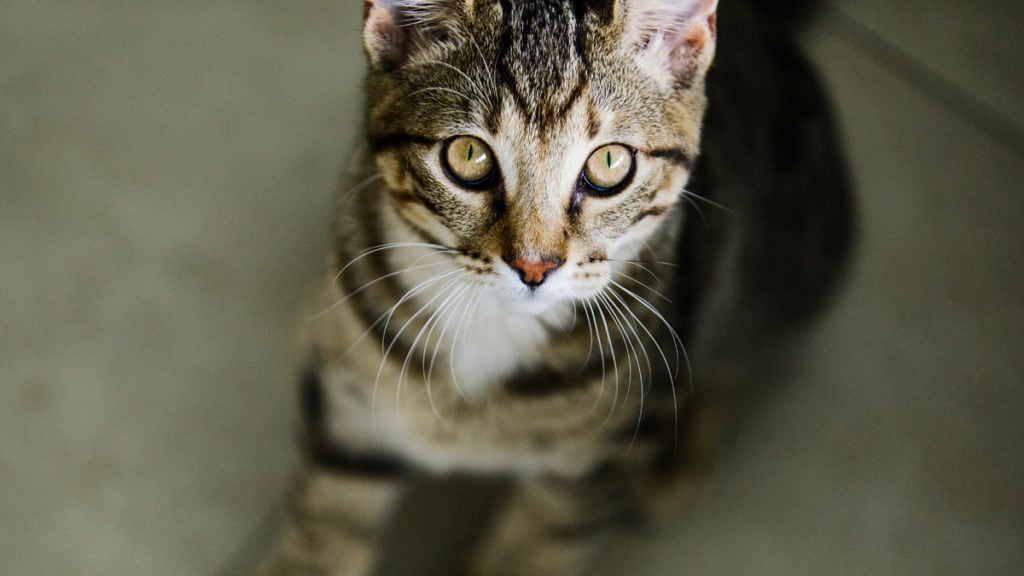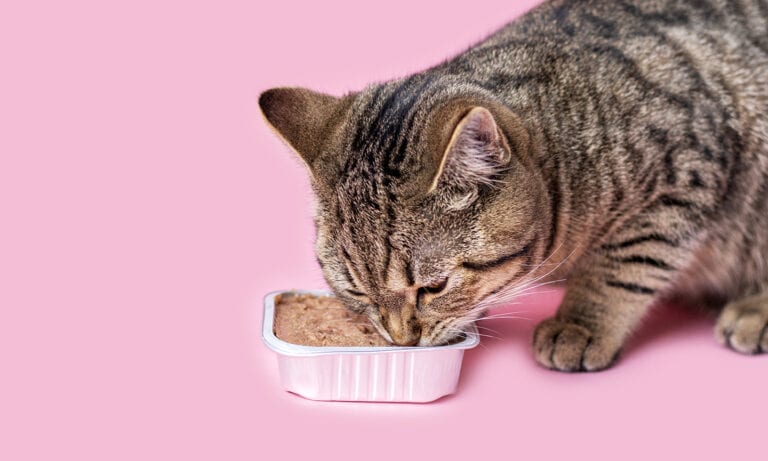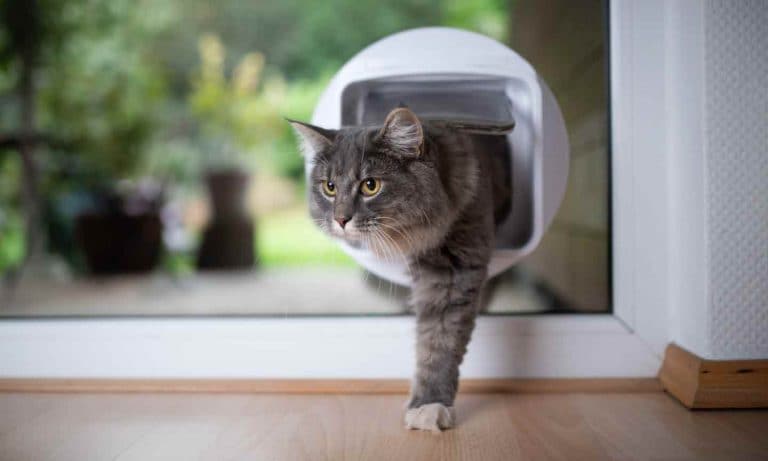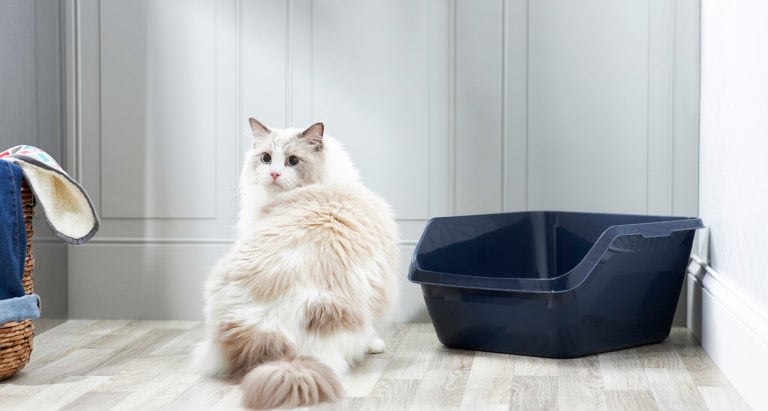Litter box problems can be frustrating to deal with, but don’t despair. One important thing to keep in mind is that a cat not using the litter box is usually a sign that something is amiss, rather than a random act of defiance. Once you figure out what’s bothering your kitty, you can start making changes to get things back to normal.
Here are eight common reasons why your cat is suddenly refusing to use the litter box.
Reason 1: Urinary Conditions
Bladder infections, bladder stones and bladder cancer in cats cause cramping of the bladder, so that they feel the need to urinate frequently and in small amounts, explains Dr. Sandy Fink, a veterinarian with over 30 years of experience and part of the team at WhiskerDocs, a 24/7 veterinarian helpline.
“A partial or complete blockage of urine outflow will also cause them to strain to urinate,” says Fink. “In both situations, because of the sense of urgency and the pain, the cat will often urinate or strain to urinate outside of the box or onto cool, smooth surfaces like tile, sinks and bathtubs.”
Cats may also associate the box itself with the pain and try to avoid it.
“Cats with a potential blockage need to be seen on an emergency basis, since they can die from not being able to urinate in as little as 48 hours,” says Fink.
Treatment usually includes antibiotics, and may require additional medications, fluid therapy, diet therapy and hospitalization in the case of urethral obstruction, Fink explains. If you see your cat struggling to urinate, take them to the vet immediately.
Reason 2: Bone and Joint Pain
Many cats, especially seniors and chubby cats, suffer silently from arthritis pain, according to integrative veterinarian Dr. Carol Osborne, DVM.
“Trimming down high-sided litter boxes makes it a lot easier for older, arthritic cats to climb in and out of their boxes, and helps to avoid litter box nightmares,” says Osborne.
You might also look into getting a new litter box with a lower entrance so your cat can step in and out easily.
If your cat stops using the litter box because of pain, you should also talk to your vet about the many natural feline arthritis supplements available to help reduce arthritis pain.
“Keeping your cat fit and trim helps to avoid obesity issues, which lead directly not only to arthritis, but also to lower urinary tract disease,” Osborne says.
If you’re free-feeding your cat and he’s looking a little chubby, switch to feeding 2-3 meals per day and see if that makes a difference in his weight.
Reason 3: Poor Litter Box Location
Cats can be picky with their toilet habits, and placing the litter box in the wrong place can be enough to send your cat searching for a different spot to urinate. Simply put, the cat litter box can’t be too public and should not be near the cat’s bed, food or water.
“It also cannot be so far away that the cat has to navigate closed doors, household traffic, or anything frightening to the cat (washing machines, toddlers) to get there,” says Fink.
In multi-cat households, Fink also recommends not placing the box in an area where the user can be “ambushed” or intimidated by another cat, such as the end of a hallway or around a corner. When in doubt, try moving the box to a new area and see if your cat prefers it. You can encourage your cat to use the litter box in that new location by adding Dr. Elsey’s Precious Cat Ultra Litter Attractant to the litter.
Reason 4: Wrong Choice of Litter
Some cats are picky when it comes to the litter they prefer. For some, the consistency, odor and even texture can affect whether they’ll use the litter box or not—which is why suddenly switching to a different brand can easily spell disaster.
“If a change in cat litter brand is necessary, mix the old and new brands together in a 90/10 (old and new) blend and slowly increase the amount of the new brand to 100% over time,” recommends Dr. Ashley Rossman, DVM, of Glen Oak Dog and Cat Hospital in Glenview, Illinois. “Eventually, the cat should be comfortable with the new brand.”
Reason 5: Your Cat Isn’t Spayed/Neutered
Intact male cats are most likely to urinate outside the box, a behavior that Fink says cats use to mark territory—usually by urinating on vertical surfaces like walls or furniture.
“Neutering the male cat is known to eliminate this behavior about 80% of the time,” Fink says. “Neutering kittens before they ever spray usually prevents it for life.”
Be sure to wait until your cat is old enough, but before they’ve reached sexual maturity to have them fixed. Check with your vet if you’re not sure if your female cat is spayed, or to find out when you should have your cat spayed or neutered.
Although female cats rarely mark their territory, the addition of a new human or pet into the household can prompt any cat to urinate in different points around the house, according to Fink. In most cases, this is a behavior triggered by stress and gets resolved on its own as the cat adjusts to the new reality. In the meantime, you can make the presence of the “intruder” a little less obvious by using Tidy Cats Litter Box Deodorizer for Multiple Cats to keep the box smelling nice and fresh.
Reason 6: The Litter Box Is Not Clean Enough
Cats are, by nature, very clean animals with a highly sensitive nose that will not take well to strong odors.
“Most cats are very picky about their litter boxes and require them to be cleaned at least once a day. If the litter box is not cleaned regularly, the majority of cats will avoid using it,” says Rossman.
To ensure quick and easy cleanup, keep a Fresh Step Deluxe Cleanup Kit on hand and scoop regularly.
Reason 7: Too Many Cats Sharing the Box
Litter box aversion can be triggered by a number of factors, and one of the them is having to share the box with too many other cats, according to Fink. “The rule of thumb is to have at least one litter box per cat, plus one extra,” says Fink. “The box should be as large as possible, and most cats prefer deep, sand-type litters in large, uncovered boxes.”
If your cat is objecting to the smell of other cats using the litter box, add Tidy Cats Large Litter Box Liners for Multiple Cats to the bottom of the box. It’s formulated with a fresh scent that will help control odors, keep the litter smelling clean, and make your cats more comfortable.
Reason 8: Household Stress
Anything that causes stress can lead to the cat peeing outside the litter box because he’s too afraid or anxious to go to the box, Fink explains.
“Moving into a new home, new people or pets, loud noises, vacuum cleaners, rambunctious children and even separation anxiety can cause a cat to urinate in inappropriate sites,” says Fink. “For example, their favorite person’s bed or chair, in a clothes’ basket or on the floor near their hiding place.”
The easiest solution? Provide the cat with a “safe room” that contains not only the litter box, but also a place to hide, toys, food and water. Be sure to keep the toys in their own area, and create a separate eating area and yet another area away from the food for the litter box. Keep the door slightly open so your cat can come out when it feels right, but also use the room to hide when things become too stressful.
“You can use calming treats, prescription anti-anxiety medications and pheromone sprays to help the cat to relax, if necessary,” Fink adds.
Share:













